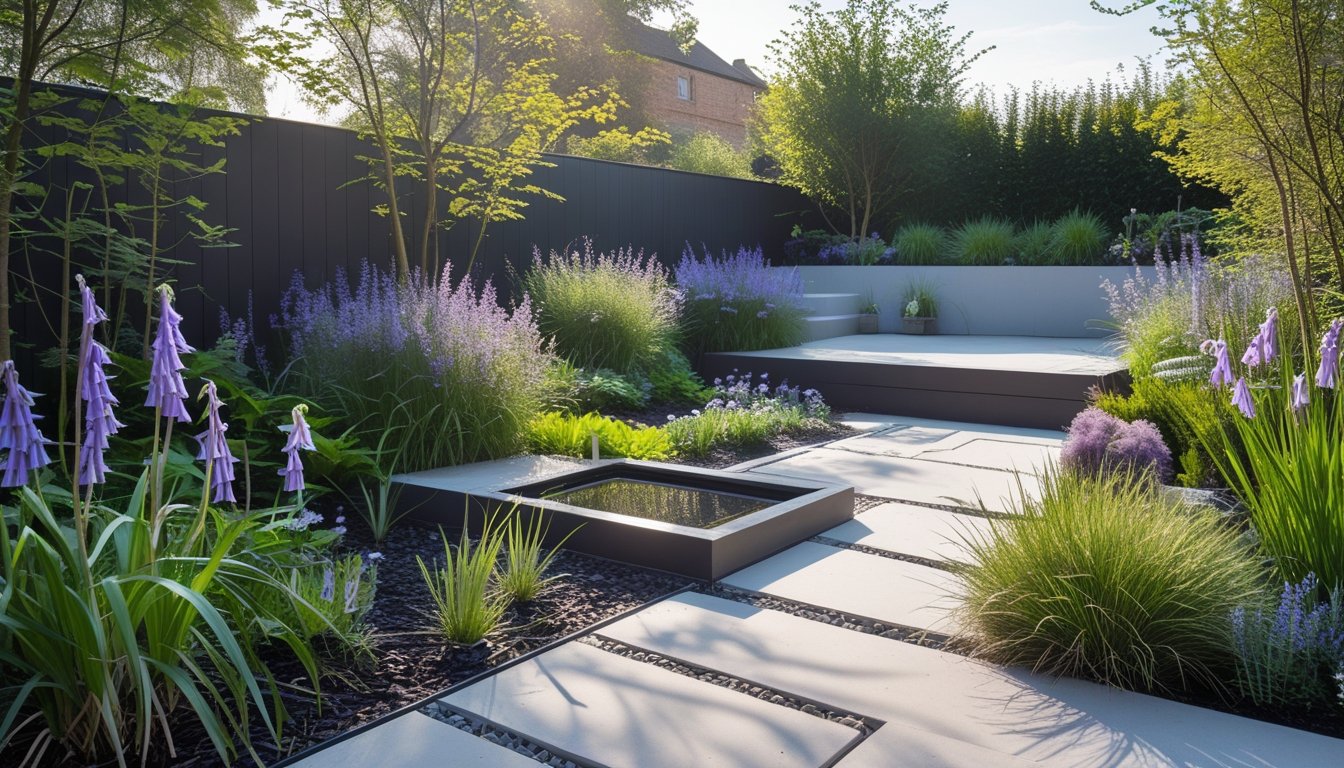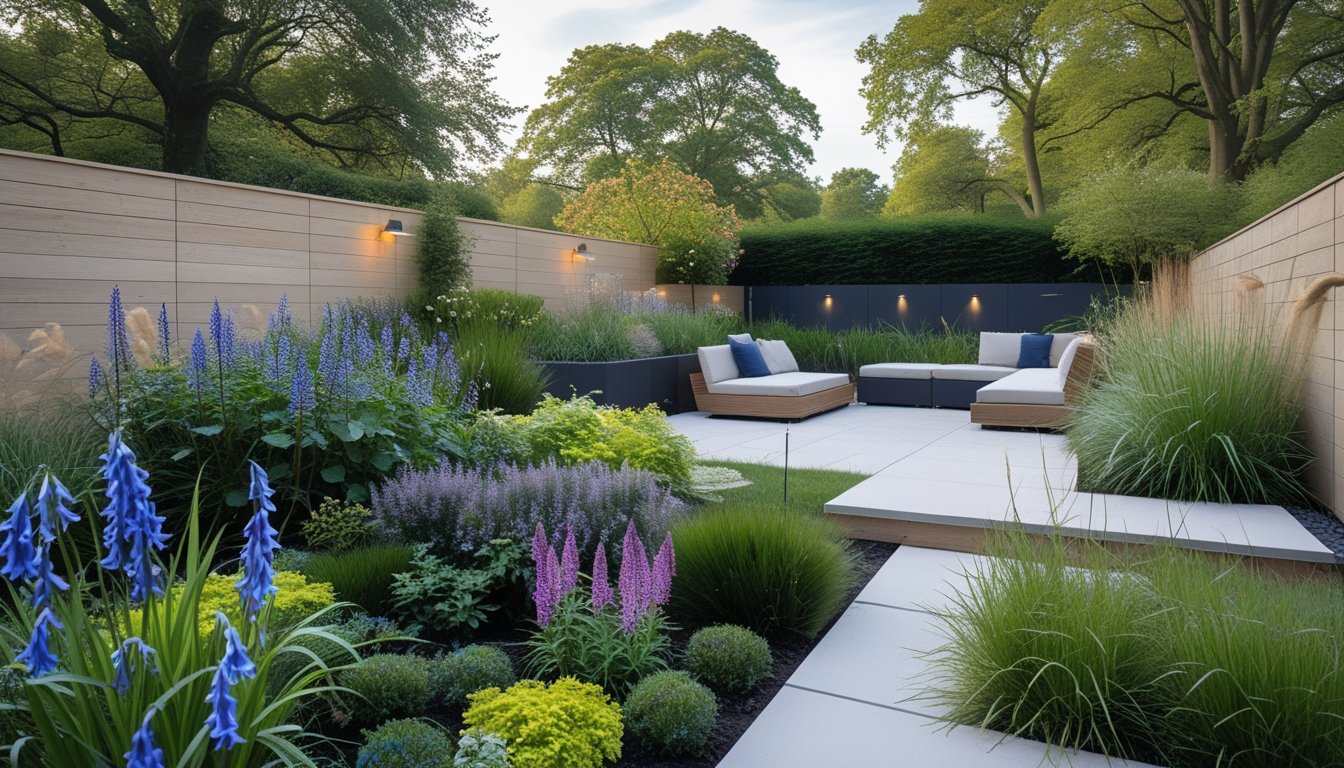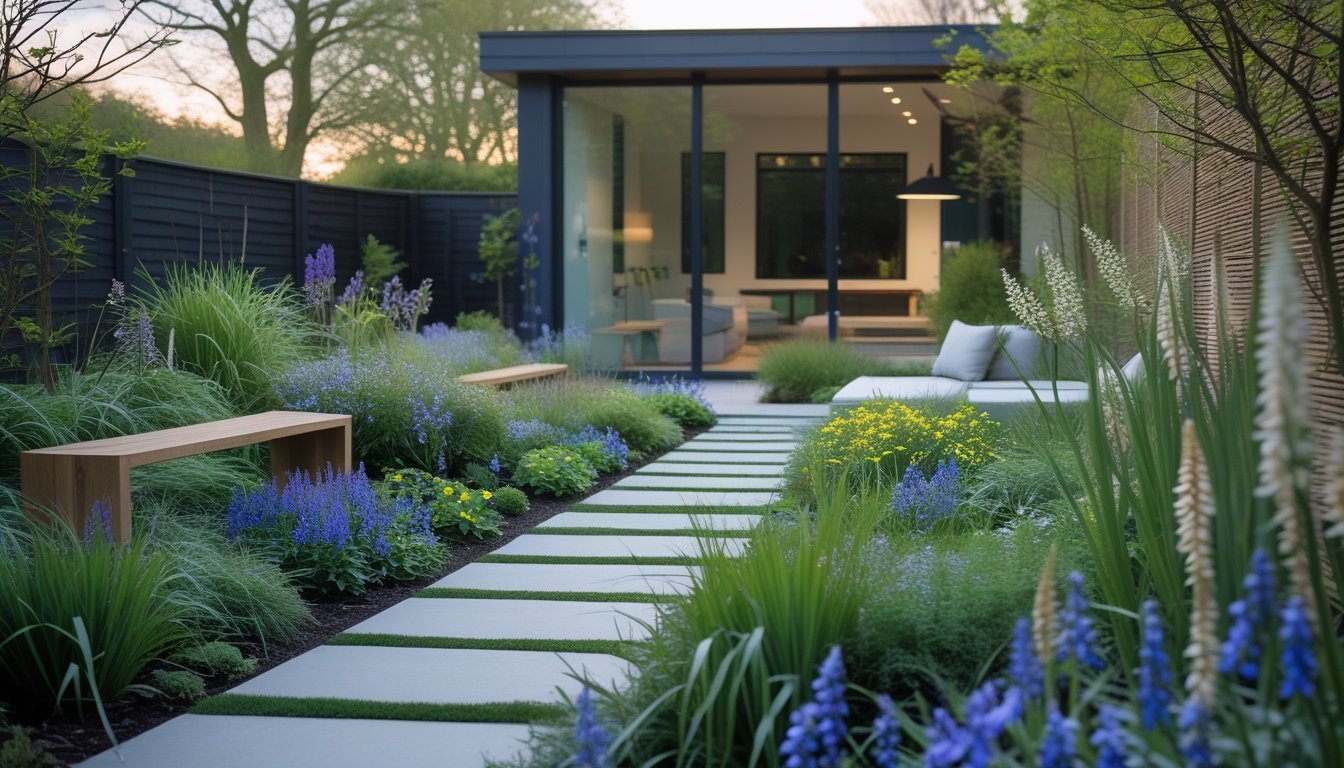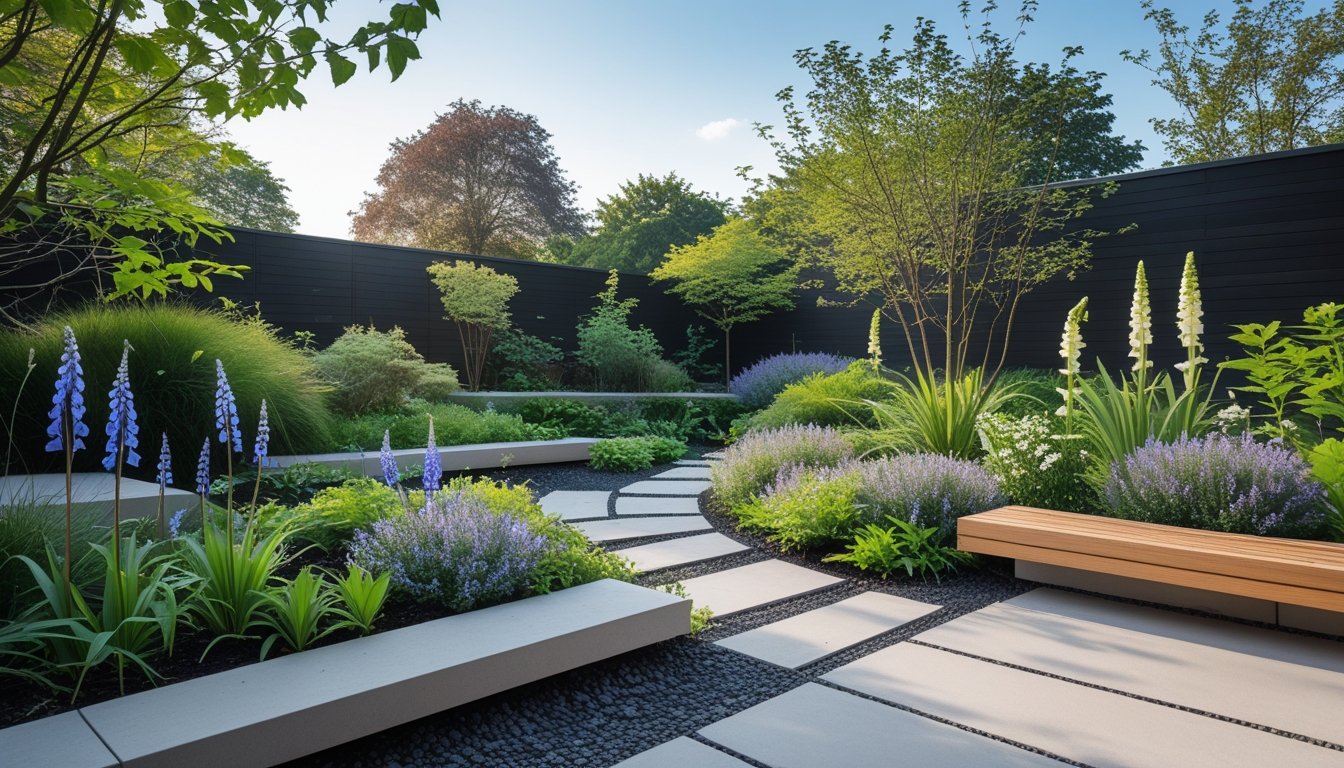Late updated: 06 Oct 2025 12:10
Written by: Emily Thornton
Integrating Native UK Plant Designs: Enhancing Modern Garden Spaces
In recent years, there's been a growing movement towards incorporating native UK plants into modern garden designs. As landscape architects and hobby gardeners, we strive for aesthetic appeal while contributing positively to the local ecosystem. Integrating native plants not only enhances the beauty of our outdoor spaces but also supports biodiversity by attracting pollinators and providing habitats for local wildlife.

The fusion of native plant designs into contemporary garden spaces presents a unique opportunity to blend ecology with art. Our approach can transform gardens into ecological masterpieces that harmonise with the environment. Sculptures and features crafted from indigenous plants add an artistic flair, ensuring that our green spaces are not only functional but also inspiring.
Navigating the practicalities of integrating native flora can sometimes pose challenges. Nevertheless, with the right strategies and insights, we can create thriving garden spaces that respect and reflect the natural heritage of the UK. Our combined efforts in this endeavour contribute to a sustainable future for our gardens and beyond.
Key Takeaways
- Native plants enhance beauty and support biodiversity.
- Combine native flora with modern design for an eco-artistic touch.
- Practical tips help overcome challenges in plant integration.
Fundamentals Of Integrating Native UK Plant Designs Into Modern Garden Spaces

Integrating native UK plants into modern garden spaces involves combining aesthetic appeal with ecological benefits. We explore the design principles, species selection, and how to balance perennials and annuals in your garden.
Design Principles For Contemporary Gardens With Native Plants
When designing a contemporary garden with native plants, it is essential to focus on simplicity and structure. Modern designs often utilise clean lines and minimalist features, allowing natural elements to stand out. Geometric shapes such as squares and circles can create a striking contrast with the organic shapes of plants.
Incorporating multifunctional spaces adds to the practicality. Areas for relaxation, biodiversity, and entertainment can coexist, providing diverse uses. By using native plant species, we can foster ecosystems that support local wildlife, such as pollinators, which play crucial roles in maintaining garden health and vigour.
Selecting Appropriate Native Species
Choosing the right native species is one of the most pivotal steps. Native plants are well-adapted to the local soil, climate, and seasons, which means they typically thrive with less intervention.
Researching local flora is important to identify which plants offer beauty and functionality and suit the environmental conditions of your space. Consider factors like blooming periods, foliage colours, and plant height that will complement your design. Species such as the Hawthorn or Field Maple are versatile choices that fit well into many garden styles.
Balancing Perennials And Annuals In Planting Schemes
Effective planting schemes involve a balance of perennials and annuals to achieve continuous interest throughout the year. Perennials provide a stable framework, with their consistent form and resilience offering structure and longevity to the design. Annuals can introduce vibrant colours and textures that evolve with the seasons.
Rotating annuals not only freshens the aesthetic but also sustains the garden's ecological balance. By selecting a variety of native perennials, such as the Common Yarrow or Wild Marjoram, alongside colourful annuals, we create a dynamic and cohesive planting design that supports biodiversity and remains aesthetically pleasing from spring through to winter.
Practical Strategies For Successful Native Plant Integration

Integrating native UK plants into modern gardens requires a thoughtful approach that combines sustainability, biodiversity, and visual aesthetics. Our focus will be on sustainable planting practices, enhancing wildlife habitats, and creating gardens that offer beauty all year round.
Sustainable Planting And Maintenance Practices
For successful integration, we should choose plants that thrive in local climates and soil conditions. Native plants inherently require less water and fewer chemical inputs, which aligns with sustainable landscaping goals.
Mulching is an effective method to retain soil moisture and suppress weeds. We can also implement drip irrigation systems to conserve water efficiently. Opting for organic fertilisers over chemical ones aids in maintaining ecological balance. Pruning and deadheading should be considered to promote healthy growth and prolong the blooming period.
Sourcing plants responsibly from local nurseries ensures that we obtain high-quality specimens adapted to our specific environment. By following these practices, we foster a healthier garden ecosystem requiring less intervention and creating minimal environmental impact.
Enhancing Biodiversity And Wildlife Habitats
A diverse range of native plants can transform our gardens into vibrant habitats supporting local fauna. By selecting a mix of flowering plants, shrubs, and trees, we offer food and shelter to a variety of species, from pollinators like bees and butterflies to birds and mammals.
To make the garden even more hospitable, consider creating designated wildlife zones. Incorporate water features such as birdbaths or small ponds to attract different wildlife, enhancing the garden's ecological functions.
Native grasses and ground covers play a critical role in building biodiversity. These plants provide structure, reduce erosion, and create protective layers for small creatures. Together, these features build an interconnected habitat that thrives alongside our modern garden designs.
Creating Year-Round Visual Interest In Modern Spaces
Native plants can offer eclectic displays throughout the seasons, adding dynamic visual appeal to modern designs. By understanding bloom times, we tailor our plant selections to ensure continuous interest. Spring blooms can gradually give way to summer displays, followed by autumnal foliage and winter textures.
Colourful ferns and evergreen shrubs maintain interest during colder months. Berry-producing plants provide both beauty and bird food, creating a lively winter scene. Designing with varying heights, textures, and colours adds depth and dimension to our spaces.
Maintaining visual interest year-round requires strategic planning but rewards us with a garden that is not only visually stunning but also sustainable and supportive of local wildlife. This approach integrates the practicality of native plants with the modern aesthetic, resulting in harmonious, welcoming spaces.
Frequently Asked Questions

Integrating native UK plants into modern garden designs provides ecological benefits and aesthetic enhancements. By choosing the right plants and understanding their role, we create gardens that support biodiversity and require less maintenance.
What are the benefits of using native UK plants in contemporary garden design?
Native UK plants are well-adapted to local conditions, reducing the need for extensive care. They support local wildlife, attract pollinators, and help maintain ecological balance, adding both beauty and functionality to any garden space.
How can one ensure that a modern garden design is ecologically sustainable with native UK flora?
Selecting plants native to the UK ensures compatibility with the local climate. We recommend using rain gardens and drought-resistant species to conserve water. By incorporating habitats such as logs and rocks, we enhance biodiversity.
What are the best native UK plants to use for year-round interest in a modern garden?
Options like holly, foxglove, and snowdrops offer seasonal variety and interest. These plants provide continuous blooms and greenery throughout the year. They thrive in British weather, making them a reliable choice for any garden.
How does one successfully combine modern aesthetics with traditional British plant species?
Use clean lines and contemporary materials to contrast with the natural forms of UK plants. Mixing formal elements like geometric paths with lush native foliage creates a balanced aesthetic that is both modern and visually appealing.
What strategies can be employed to maintain a native plant garden with minimal environmental impact?
Implementing mulching and composting techniques can enhance soil health naturally. Regular pruning and weeding without chemicals help keep the garden thriving. We aim for sustainable practices that minimise our carbon footprint.
In what ways can native UK plants contribute to local biodiversity within modern garden spaces?
Native plants provide food and habitat for local wildlife, including birds and insects. By creating a diverse planting scheme, we support various species and contribute to ecological stability. This fosters a vibrant, self-sustaining ecosystem.
